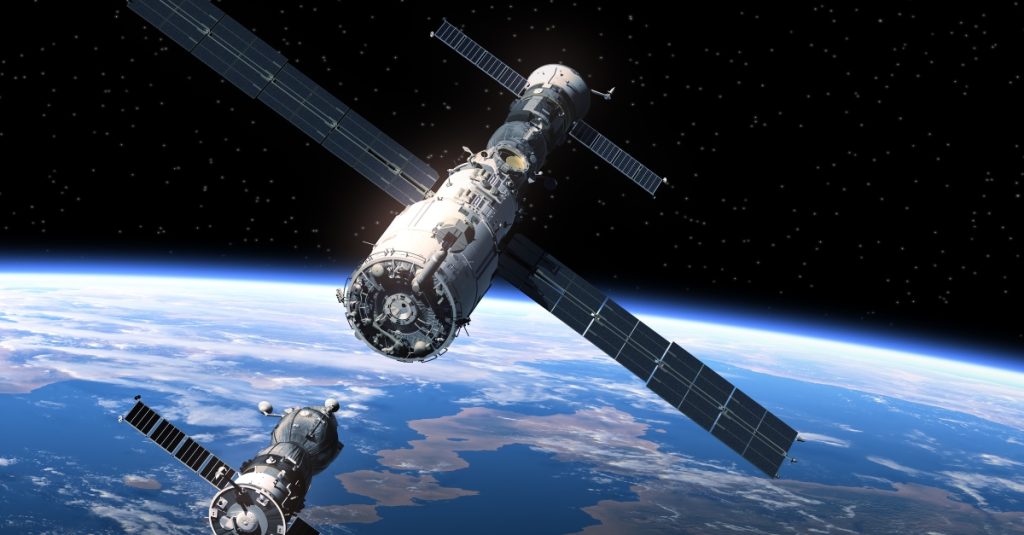Europe’s ambitious Green Deal demands innovative solutions. While solar panels and wind turbines capture the public imagination, a powerful force for a greener future often goes unnoticed: space technology.
Through Earth Observation (EO) and Geographic Information Systems (GIS), space is becoming a launchpad for sustainable infrastructure, smarter transport networks, and a more informed approach to environmental challenges.

Earth’s Sentinels: The Power of EO
EO satellites act as Earth’s watchful eyes, providing high-resolution data on everything from deforestation to air quality. This information is crucial for sustainable infrastructure development.
Imagine using EO data to identify optimal locations for wind farms, maximising wind capture while minimising environmental impact. Similarly, EO can help pinpoint areas with unstable soil, preventing costly and disruptive infrastructure failures.
The European Copernicus program is a prime example. Copernicus Sentinels – a fleet of advanced observation satellites – provide a treasure trove of data freely available to governments, businesses, and researchers.
This data empowers informed decision-making, ensuring infrastructure projects are not just functional, but also environmentally responsible.
Companies like Tracsis Geo Intelligence are at the forefront of utilising this data. We leverage EO data and combine it with advanced analytics to deliver actionable insights for businesses and governments.
Imagine using such expertise to analyse EO data and identify the perfect location for a new solar power plant, maximising sun exposure while minimising impact on sensitive ecosystems.

GIS: Making Sense of the Big Picture
GIS acts as the brain behind EO’s brawn. Imagine a powerful mapping tool that integrates EO data with topographic information, land-use maps, and other relevant datasets.
This is the magic of GIS. By overlaying layers of information, GIS creates a holistic view of the environment, allowing planners to model potential outcomes and identify the most sustainable options.
For instance, when building new transportation routes, GIS can analyse traffic patterns, land cover, and potential environmental disruptions. This allows for the optimisation of routes, minimising congestion and environmental impact.
Additionally, GIS can be used to monitor infrastructure projects in real-time, ensuring compliance with environmental regulations and identifying potential problems before they occur.

A Greener Journey
The transport sector is a significant contributor to greenhouse gas emissions. However, EO and GIS are driving a sustainable transportation revolution. Here’s how:
- Smarter Traffic Management: Real-time traffic data from EO satellites can be used to optimise traffic light timings and improve route planning for public transport. This reduces congestion, emissions, and travel times.
- Multimodal Transport: GIS can be used to plan efficient and accessible multimodal transport networks, integrating cycling paths, public transport hubs, and car-free zones. This encourages a shift away from private car use, lowering emissions and creating more sustainable cities.
- Electric Vehicle Infrastructure: EO and GIS can identify optimal locations for charging stations, ensuring they are conveniently located near major roads and population centres. This facilitates the transition to electric vehicles, a significant step towards a greener future.

The Rise of Space Tech Adoption
The good news is that EO and GIS are becoming increasingly accessible and affordable. Cloud-based platforms provide user-friendly interfaces and on-demand access to vast datasets, making these technologies even more valuable for both governments and communities.
National and local governments across Europe are already embracing this space-driven approach. For instance, the city of Copenhagen is using GIS to create a “Green Wave” traffic management system, prioritising public transport and reducing emissions. Similarly, the French government utilises EO data to monitor deforestation and track ecological changes.
Collaboration is Key
Maximising the potential of EO and GIS requires strong collaboration. Public-private partnerships can ensure innovation and efficient application of these technologies.
Furthermore, fostering international cooperation allows for data sharing and the development of standardised protocols, propelling Europe towards a truly sustainable future.
Europe’s Green Deal is a complex but achievable endeavour. By harnessing the power of EO and GIS, space technology is emerging as a game-changer, paving the way for a greener and more sustainable future.
From responsible infrastructure development to smarter transportation systems, space-based solutions offer a powerful toolkit for Europe’s sustainable leap forward.
The final frontier isn’t just about exploration; it’s about building a better future right here on Earth.
Tracsis Geo Intelligence is at the forefront of this movement in Europe, providing the tools and expertise needed to unlock the full potential of EO and build a greener future for the continent.
